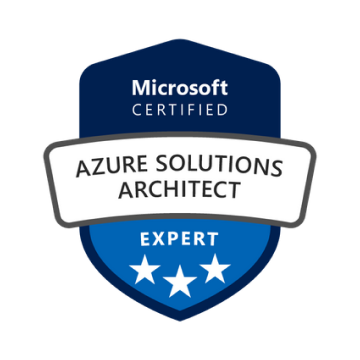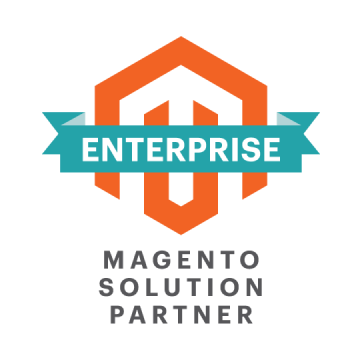Telecom Lead Generation
We help energy companies build a reliable pipeline of qualified buyers for complex telecom offerings – fiber, private LTE/5G, IoT connectivity, and OSS/BSS solutions. Through ICP research, account-based campaigns, and sales-ready sequencing, we convert intent signals into booked meetings that match your deal criteria and timelines. If you’re assessing partners, we focus on practical steps that move prospects from first touch to opportunity.

Our Offerings
ICP & Buying-Committee Research
We map your ideal customer profile across utilities and energy enterprises, then identify the real buying committee: network engineering, operations, cybersecurity, procurement, and finance. We interview stakeholders, analyze recent RFPs, and mine win/loss notes to learn triggers (grid modernization, substation upgrades, AMI refresh, private LTE pilots). The output is a practical target matrix with use cases, buyer pains, value proof points, and objection handling you can hand to sales the same day. This groundwork cuts wasted outreach and raises first-call relevance.
Account-Based Prospecting with Intent Signals
We combine ABM orchestration with intent data to surface accounts already researching fiber backhaul, private LTE/5G, IoT connectivity, and OSS/BSS modernization. Contacts are prioritized by signal strength, role seniority, and tech fit. Plays include coordinated ads, warm email, and SDR calling with context pulled from the account’s recent activity and tech stack. Sales gets short lists of in-market accounts plus conversation guides aligned to that account’s projects and timelines.
High-Intent Demand Capture (Search & LinkedIn)
We build paid search and LinkedIn programs that harvest buyers already looking for solutions – queries around “private LTE for utilities,” “substation connectivity,” “NERC CIP network segmentation,” and adjacent needs. Ad groups mirror use cases and procurement language, not generic slogans. Landing pages address risk, deployment models, and integration with existing OT/IT systems. Budgets are steered by cost-per-qualified-lead, opportunity rate, and sales cycle milestones, so spend moves to what converts.
Conversion Assets & Nurture Programs
We produce assets that move technical and business stakeholders forward: one-page solution briefs, deployment checklists, ROI models, architecture diagrams, and case snapshots from similar grid contexts. Nurture tracks segment by buying stage – education, evaluation, justification – and use progressive profiling to reduce form friction. Each email or ad links to a next step (calculator, demo, workshop) and is A/B tested against a single conversion goal. The result is steady movement from MQL to sales-ready conversations.
SDR Appointment Setting & Sales Sequencing
Our SDRs run multi-channel sequences tuned to enterprise buyers – voicemail drops, short emails with a single value hook, and LinkedIn touches that reference current initiatives (e.g., outage management, field connectivity, or AMI backhaul). We gate meetings by budget, authority, need, and timing so account executives receive calendars filled with viable opportunities, not “curiosity calls.” Every interaction is logged to your CRM with clear next steps and handoff notes.
RevOps, CRM Integration & Attribution
We connect campaigns to your CRM and marketing automation to track leads from first touch to closed-won. This includes routing rules, deduping, lead scoring tied to buying signals, and dashboards that show pipeline by channel, account, and use case. We also clean data, standardize naming, and integrate offline steps like pilot evaluations or lab tests. With full-funnel attribution in place, you can fund the channels and messages that consistently create qualified pipeline for complex connectivity projects.
How We Bring Value To Your Business
We focus on actions that create qualified conversations and forecastable pipeline, then make that impact visible in your CRM.
1
Faster Entry into Real Deals
We cut research and qualification time by targeting accounts already planning connectivity upgrades (private LTE/5G, fiber backhaul, AMI refresh). Sequences reference live projects and procurement cycles, so first meetings are scoped around budgets, sites, and timelines – not generic discovery.
2
Higher Win Probability per Opportunity
Plays are mapped to buying roles – operations, network engineering, cybersecurity, finance – so each contact gets what they need to move forward: risk considerations, deployment models, and cost drivers. By aligning with decision criteria early (TCO, resiliency, compliance, interoperability), opportunities progress with fewer stalls.
3
Lower Cost per Sales-Qualified Lead
We direct spend to channels and queries that historically convert in utilities and large energy enterprises. Keyword sets use procurement language (“substation backhaul,” “field connectivity,” “AMI network design”) and negative lists remove research traffic. Budgets are shifted based on SQL rate and opportunity creation, not clicks.
4
Clean Handoffs and Shorter Sales Cycles
Every booked meeting arrives with context – account notes, current vendors, installed tech, known constraints, and next-step suggestions. Reps skip re-qualification and move to technical validation or workshop invites faster, which shortens cycles for complex connectivity decisions.
5
Clear Attribution for Board & Finance Reviews
We wire campaigns to your CRM/automation so you can see pipeline by account, use case, and channel. Dashboards track SQLs, stage movement, and pipeline created, tying marketing activity to sales outcomes your leadership cares about.
6
Scalable Prospecting Without Headcount Surprises
As programs mature, audience definitions, sequences, and creative are packaged as reusable “plays.” New regions or segments can be activated with predictable ramp time and minimal lift from your team, keeping focus on delivery and customer commitments in the energy business and telecom partnerships.
Challenges We Commonly Solve
Complex buying cycles and technical vetting make pipeline creation slow and unpredictable. We remove the blockers that usually stall progress.
Shorten the path from first touch to qualified meeting.
Why Choose WiserBrand
We plug into your sales motion, tools, and KPIs, then run repeatable plays that create qualified conversations with utility and enterprise energy buyers.
1
Domain fluency in energy + connectivity
Your prospects speak in grid upgrades, AMI refreshes, SCADA constraints, and private LTE/5G pilots. We translate these realities into messaging, targeting, and qualification criteria that match how teams buy, deploy, and operate. That sharper fit improves first-call relevance and reduces time lost on poor-fit accounts in telecom partnerships.
2
RevOps foundations that make impact visible
We wire campaigns to your CRM and marketing automation: data hygiene, routing rules, lead scoring tied to buying signals, and dashboards that show SQLs, stage movement, and pipeline by account and use case. Sales handoffs arrive with context (sites, vendors, risks, next steps) so reps move straight to validation or pilot scoping.
3
Execution you can scale and later own
Plays, sequences, ad groups, and content kits are documented and versioned. As you expand regions or segments, the same assets deploy with minor adjustments. We train in-house teams on the motions we run, so capability remains with you long term – useful as telecom projects grow across new facilities and service territories.
Cooperation Models
Choose how you want to work with us based on your team capacity, timelines, and pipeline goals.
Start with a focused pilot aimed at one segment or use case (e.g., private LTE for substations or fiber backhaul for remote sites). We set targets for booked meetings and SQLs, build the audience, launch campaigns, and run SDR sequences. You get weekly pipeline reviews, a clear view of cost per SQL, and a go/no-go decision at day 75. If it hits the mark, we extend the same play into additional regions or product lines with minimal rework.
A cross-functional pod (strategist, media, SDR, and RevOps) operates as an extension of your team. The pod manages account selection, messaging, ads, outbound sequencing, and handoffs into your CRM. You’ll see a steady rhythm of qualified meetings and stage movement, with monthly planning to reallocate budget toward accounts and channels creating the strongest opportunities in energy enterprises and telecom partnerships.
We design the motion, implement the tooling (audience definitions, routing, scoring, dashboards), create sequences and assets, then run it with you for one to two quarters. Along the way, we train your marketers and SDRs, document playbooks, and set QA steps for data hygiene and reporting. When the motion is stable, ownership shifts to your team; we remain available for periodic audits or new market launches.
Our Experts Team Up With Major Players
Partnering with forward-thinking companies, we deliver digital solutions that empower businesses to reach new heights.
Our Approach
We run a repeatable motion that ties research, campaigns, and sales execution to clear next steps in your CRM.
ICP Validation & Deal Criteria
We confirm who actually buys: roles, plants/sites, budget bands, and triggers (grid upgrades, AMI refresh, private LTE/5G pilots). We review past wins/losses, active RFPs, and current vendors to codify “go/no-go” rules. Output: a target matrix (accounts, contacts, use cases, objections) and qualification checklist sales can use on the first call.
RevOps Foundations & Data Hygiene
We connect ad platforms and outbound tools to your CRM/automation, fix routing and deduping, and align stages to the sales process. Lead scoring is tied to buying signals, not clicks. Dashboards report SQLs, stage movement, and pipeline by account and use case, so budget shifts are evidence-based.
Demand Capture & ABM Orchestration
Search and LinkedIn focus on high-intent terms and procurement language (e.g., “substation backhaul,” “field connectivity,” “OSS/BSS modernization”). In parallel, account-based plays run warm email, SDR calls, and ads against in-market accounts flagged by intent data. Messaging references the account’s projects and installed tech to raise first-meeting relevance for telecom lead generation.
SDR Sequencing & Meeting Handoffs
SDRs execute multi-channel sequences with one clear ask per touch. Meetings are accepted only when budget, authority, need, and timeline are confirmed. Every handoff includes context: site counts, constraints, incumbent vendors, evaluation steps, and a recommended next action (assessment, architecture review, pilot scope).
Feedback Loop & Scale-Up
We review outcomes each week: reply patterns, asset usage, stage progression, and opportunity sources. Plays are pruned or expanded, negative keywords updated, and sequences versioned. When a segment proves out, we extend it to adjacent regions or offers with minimal rework, sustaining B2B demand generation at forecastable levels.
Case Studies
Our case studies highlight the outcomes we’ve delivered and the approaches that made them possible.
Telecom Lead Generation FAQ
Most pilots generate first meetings in 3-4 weeks once ICP, messaging, and routing are set. We publish weekly pipeline reports so you can track booked calls, SQLs, and stage movement.
We gate on budget range, authority, defined need (e.g., private LTE for substations, AMI backhaul), and timeline. Handoffs include site counts, incumbent vendors, and the next recommended step (assessment, architecture review, or pilot scope).
Yes. We connect campaigns, scoring, and routing to your existing CRM/automation. All touches and outcomes are logged, dashboards show opportunity creation by account and use case, and your team keeps full visibility.
We map roles across operations, network engineering, cybersecurity, finance, and procurement. Plays deliver role-specific value points and address common objections so momentum continues past the champion.
Pilots usually start with a focused segment and a clear target for booked meetings and SQLs. Success is judged on opportunity creation and movement to technical validation – not clicks. If the motion performs, we scale to additional regions or offers across telecom initiatives.























